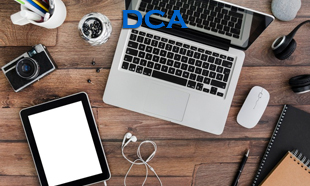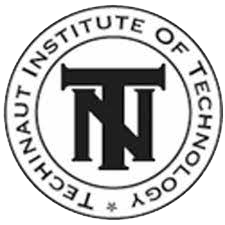0
DIPLOMA IN COMPUTER APPLICATION" at BOSCOTECH, Tarapur-Khelma, Assam, offers extensive training in computer applications at the prestigious Techinaut Institute of Technology, preparing students for diverse career opportunities in technology.
In today's digital age, proficiency in computer applications is essential for success in various fields. Boscotech, a Techinaut Institute of Technology franchise based in Tarapur-Khelma, Cachar, Assam, offers a comprehensive 6-month Diploma in Computer Application (DCA) course. This course is not just a surface-level introduction but a deep dive into the world of computer applications. It is designed to equip students with the skills and knowledge necessary to navigate and utilize computer applications effectively for personal and professional use.
THE OBJECTIVE OF THE COURSE:
The Diploma in Computer Application course offered by Boscotech is a comprehensive program that ensures students develop proficiency in using computer applications for various tasks. Throughout the 6-month duration, students will cover a wide range of topics, providing them with a thorough understanding of computer applications.
- Basics of computers, including hardware, software, and operating systems.
- Learn about computer organization and architecture, including CPUs, memory, storage devices, and input/output devices.
- Master using popular software applications, such as word processing, spreadsheet, and presentation packages, to create and manage documents, data, and presentations.
- Develop practical skills for communication, research, and information retrieval using the Internet and electronic mail (email).
- Explore advanced topics such as database management systems, graphics design, and web development to enhance their computer application skills.
SECTION 1: BASICS OF COMPUTER
The course begins with an introduction to the basics of computers, providing students with a foundation in computers. Students learn about the components of a computer system, including the CPU, memory, storage devices, input and output devices, and peripheral devices.
SECTION 2: COMPUTER ORGANIZATION
In this section, students delve deeper into computer organization and architecture, learning about the internal workings of a computer system. They gain insights into the functioning of CPUs, including processing cycles, instruction sets, and execution pipelines.
Students also learn about memory hierarchy, including primary and secondary storage devices, and how data is stored and retrieved from memory. Additionally, they explore input/output devices and their role in interacting with the computer system.
SECTION 3: OPERATING SYSTEM
In this section, students focus on operating systems and learn about Windows, macOS, Linux, and Unix. They explore their functions and features, including process management, memory management, file management, and user interface.
Students gain hands-on experience with popular operating systems, learning to navigate the graphical user interface, manage files and folders, install and uninstall software applications, and customize system settings.
SECTION 4: WORD PROCESSING
In this section, students learn to use word processing software such as MS Word and Google Docs to create, format, and edit documents. They explore features such as text formatting, paragraph styles, page layout, and inserting images and graphics into documents.
Students also learn about advanced features such as mail merge, collaboration tools, document sharing, proofreading, spell-checking, and grammar-checking techniques.
SECTION 5: SPREADSHEET PACKAGE
In this section, students delve into spreadsheet software MS Excel and Google Sheets to organize, analyze, and present data. They learn about features such as cells, rows, and columns, as well as formulas, functions, and data manipulation tools.
Students explore techniques for creating and formatting spreadsheets, performing calculations, creating charts and graphs, and using advanced features.
SECTION 6: PRESENTATION PACKAGE
In this section, students learn to create and deliver presentations using presentation software applications such as Microsoft PowerPoint or Google Slides. They explore features such as slide layouts, themes, transitions, and animations and techniques for adding text, images, and multimedia elements to slides.
Students also learn about practical presentation design principles, including visual hierarchy, simplicity, audience engagement, and strategies for delivering presentations confidently and persuasively.
SECTION 7: INTRODUCTION TO THE INTERNET
In this section, students gain an introduction to the Internet and its various components, including the World Wide Web, email, online communication tools, and web browsers. They learn about the Internet's history and evolution and its impact on communication, commerce, and society.
Students explore techniques for using web browsers to navigate the web, search for information, and access websites, blogs, and social media. They also learn about internet safety and security practices to protect their personal information and privacy online.
SECTION 8: ELECTRONIC MAIL
In this section, students learn about electronic mail (email) and its role in modern communication. They gain insights into the history and evolution of email and its features and functionalities, including composing, sending, receiving, and organizing messages.
Students explore techniques for managing email accounts, including setting up email clients, configuring email settings, organizing email folders, and filtering spam messages. They also learn about email etiquette and best practices for effective communication in personal and professional contexts.
CONCLUSION
The 6-month Diploma in Computer Application course offered by Boscotech is not just about theoretical knowledge. It's about practical skills that you can immediately apply to various tasks. By covering topics such as computer fundamentals, operating systems, word processing, spreadsheets, presentation packages, the Internet, and email, the course equips students with the tools and techniques needed to succeed in today's digital world.
Graduates of this course are not just equipped with computer application skills, but also with the confidence to thrive in the modern workplace. They are well-prepared to pursue careers in a wide range of fields, including administrative assistants, data entry clerks, office managers, and customer service representatives. This course opens up a world of possibilities where students can excel in creating documents, analyzing data, delivering presentations, or communicating online.


